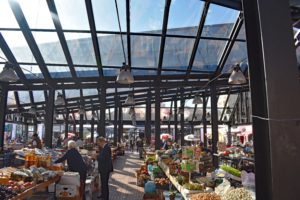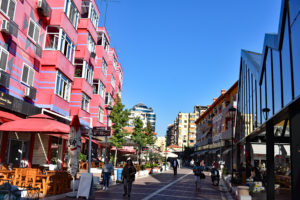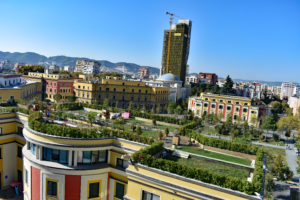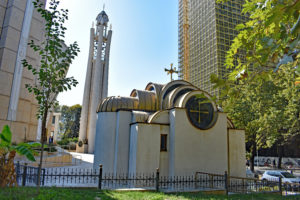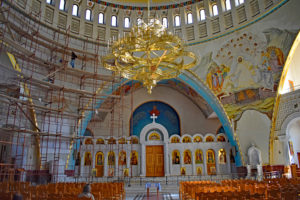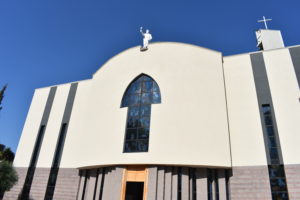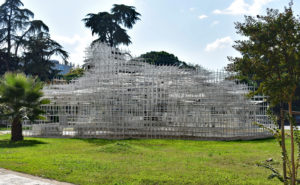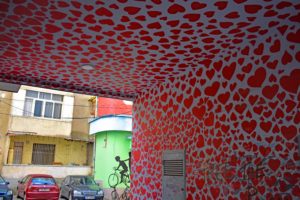At the end of a long tour, we stayed in Albania’s capital, Tirana, for five nights at the “Oxford Hotel”:https://www.silvertraveladvisor.com/review/accommodation/202008-review-oxford-hotel. As our flight home wasn’t until late evening, we had a final opportunity to take in the sights we’d not already seen (see parts “one”:https://www.silvertraveladvisor.com/review/place/202125 and “two”:https://www.silvertraveladvisor.com/review/place/202136).
NEW BAZAAR – we’d visited this area several times for dinner as it has many “restaurants”:https://www.silvertraveladvisor.com/review/place/202162 and bars, but early in the morning the covered market was in full swing. The stalls had various goods for sale including fresh fruit and vegetables, raki (a strong schnapps like drink) in plastic water bottles, honey, household items and tobacco.
CLOCK TOWER or Kulla e Shatit – in 1928 Albania bought the clock from Germany and built up the tower to 35m. Ironically, during World War II it was damaged, but restored in July 1946. Once again, we’d passed the tower several times, and although I’d read you could climb to the top, it always appeared shut. However, with time to investigate, we found to our surprise an open door, and paid 200 Lek/£1.48 each. The lovely young girl offered to keep our bags whilst we climbed the 90 metal steps which, although narrow, were in manageable blocks of five. At the top, we opened the door and immediately a pigeon flew in, so having shooed it out, we closed the door and realised why it was kept closed. Fortunately, we were on our own as the four-sided viewing area was narrow. In one direction we saw Skanderbeg Square and the dome of Et’ham Beg Mosque, whilst in another was the yellow Italian designed ministry buildings, one with a spectacular roof garden.
THE RESURECTION OF CHRIST OTHODOX CATHEDRAL – was consecrated as recently as 2014 and is the largest Orthodox Church on the Balkan peninsular. The complex also includes the chapel of the Nativity, bell tower, the residence of the Holy Synod, cultural centre and library, two other chapels and a small museum. A beautiful large portrait of Christ covered the huge central dome, which was said to be done in mosaics although because of the height (32m) it was difficult to tell. Each of the four corners had frescoes, although one had scaffolding as it was still being completed: we could see the outline sketches on the walls. Unusually the iconostasis was made out of white marble rather than wood. The main part of the cathedral was roped off and just a few pews were left for visiting worshippers.
ST PAUL’S CATHEDRAL – a modern Catholic church, consecrated in 2002, with plain walls giving it a light, bright feel with curved polished wooden pews. The design combines a triangle and circle which respectively represent the Trinity and God’s Eternity. The altar was simple with a large wooden figure of Christ on the cross above it. Whilst we were sat, a lady from the church came to welcome us and chat. There was a large modern stained-glass window to the left of the entrance containing Pope John Paul II and Mother Theresa. One wall had a large mosaic of Mother Tereasa made from shells and there was also a statue of her outside.
THE CLOUD PAVILION – from a distance, we’d seen a modern piece of architecture, resembling a box of white pipes in various directions. With time we explored, and found it was designed by Sou Fujimoto and offered courtesy of the LUMA Foundation for the promotion of arts in Albania. Whilst you could climb over and through it, you needed to be careful. In the interior section, a conversation between a man and woman was being filmed.
BLLOKU DISTRICT – here we found a trendy area full of upmarket boutiques and shops selling designer wear, and trendy restaurants and bars. Although it was reserved for the communist party elite, and ordinary Albanian citizens were banned, it is now said to be the ‘playground of the young Albanian elite’.
RED HEART TUNNEL – having read about this in our guidebook, we searched the relevant area and eventually found an arched passageway. It had been originally covered with painted red hearts but the ones below head height, were covered with graffiti.
Many people simply skim through Tirana, but having spent five nights in the city, we felt we had really got to know and love it. It would make an ideal city break as direct flights from the UK take around 3 hours.
